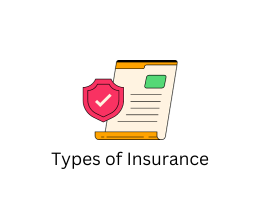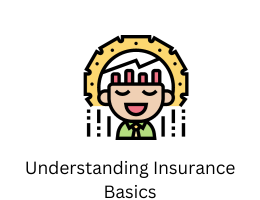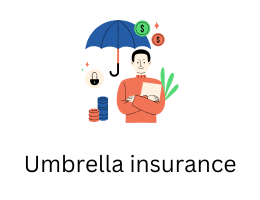
Insurance: Definitions
- By admin --
- Saturday, 14 Dec, 1901
In day- to- day life, the man is brazened with colorful pitfalls. still great a genius he may be, it's insolvable for him to prevision all the disasters in store for him and give necessities for them to advance.
Numerous happy lives are ruined either by the early death of the earning member of the family or by other disastrous disasters similar as cataracts, fire, earthquake, war, accidents,etc., which may take a heavy risk on mortal life.
These pitfalls can not be known in advance as to when they win be, and it's physically insolvable for an individual to make provision against them by him.0
Insurance is a device not to forestall these pitfalls but to alleviate their rigor on individualities. Insurance is defined as a collaborative device to spread the loss caused by a particular threat over several persons exposed to it and who agree to ensure themselves against that threat.
The threat is the query of a fiscal loss. It shouldn't be confused with the chance of loss which is the probable number of losses out of a given number of exposures. It shouldn't be confused with pitfall which is defined as the cause of the loss, or with a hazard which is a condition that may increase the chance of loss.
Eventually, threat mustn't be confused with the loss itself, which is the unintentional decline in or exposure of value arising from a contingency.
Wherever there's query concerning a probable loss, there's a threat.
The threat is the query of a fiscal loss. It shouldn't be confused with the chance of loss, which is the probable number of losses out of a given number of exposures.
It shouldn't be confused with “ pitfall, ” which is defined as the cause of the loss, or with “ hazard, ” which is a condition that may increase the chance of loss.
Definition of Insurance
Before we completely unfold on the description of insurance; we should get familiar with the following terms;
The description of insurance can be made from two points
- Functional description and,
- Contractual description.
Let’s get a brief idea about the two points;
Functional Definition of Insurance
Insurance is a collaborative device to spread the loss caused by a particular threat over some persons exposed to it and who agree to ensure themselves against the threat.
therefore, the insurance is;
- a co-operative device to spread the risk;
- the system to spread the risk over many persons who are insured against the risk;
- the principle to share the loss of each member of the society based on the probability of loss to their risk; and
- the method to provide security against losses to the insured.
Also, another description can be given. Insurance is a collaborative device of distributing losses falling on an individual or his family over numerous persons, each bearing a nominal expenditure and feeling secure against heavy loss.
Contractual Definition of Insurance
Insurance is defined as a form of threat operation primary insurance has been defined to be that in which a sum of plutocrat as a decoration is paid in consideration of the insurance incurring the threat of paying a large sum upon a given contingency.
The insurance, therefore, is a contract whereby;
- Certain sum, called premium, is charged in consideration,
- Against the said consideration, a large sum is guaranteed to be paid by the insurer who received the premium,
- The payment will be made in a certain definite sum, i.e., the loss or the policy amount, whichever may be, and
- The payment is made only upon a contingency.
The more specific description can be given as following “ Insurance may be defined as a conforming one party( the insurer) agrees to pay to the other party( the insurer) or his devisee, a certain sum upon a given contingency( the threat) against which insurance is sought. ”
So it's clear that every threat involves the loss of one or the other kind. The function of insurance is to spread this loss over numerous persons through the medium of cooperation.
The persons exposed to a particular threat cooperate to partake the lower caused by that threat whenever it takes place.
therefore the threat isn't prevented, but the members partake the loss on its circumstance. The Significance of this fact will be clear by the following illustration.
The legal description focuses on a contractual arrangement whereby one party agrees to compensate another party for losses.
The fiscal description provides for the backing of the losses. In discrepancy, the legal description provides for the fairly enforceable contract that spells out the legal rights, duties, and scores of all the parties to the contract.
Every threat involves the loss of one or another kind. The function of insurance is to spread the loss over numerous persons who agree to co-operate with each other at the time of loss.
The threat can not be prevented, but loss being due to a certain threat can be distributed amongst the agreed persons.
They agree to partake the loss because the chances of loss, i.e., the time, quantum to a person, are unknown. Anybody may suffer a loss to a given threat, so the rest of the persons who are agreed will partake the loss.
The larger the number of similar persons, the easier the process of distribution of loss.
In fact, the loss is participated by them by payment of decoration which is calculated on the probability of loss. In olden times, the donation by the persons was made at the time of loss.
Insurance is also defined as a social device to accumulate finances to meet the uncertain losses arising through a certain threat to a person ensured against the threat.





